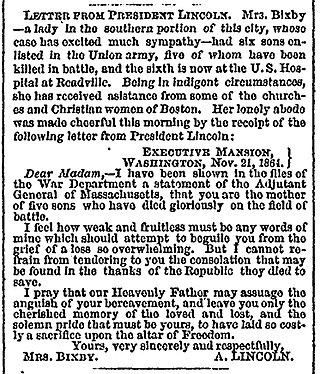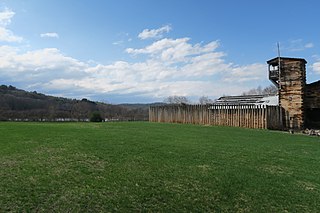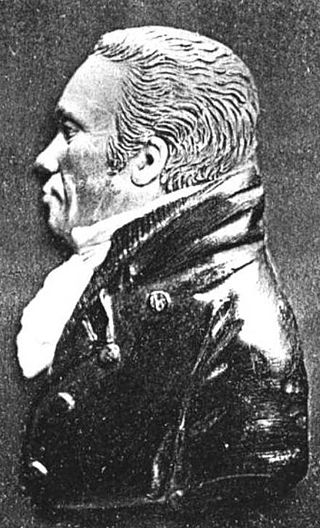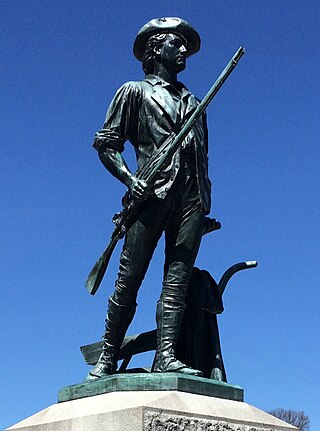
Uxbridge is a town in Worcester County, Massachusetts, United States, first colonized in 1662 and incorporated in 1727. It was originally part of the town of Mendon, and named for the Earl of Uxbridge. The town is located 36 mi (58 km) southwest of Boston and 15 mi (24 km) south-southeast of Worcester, at the midpoint of the Blackstone Valley National Historic Park. The historical society notes that Uxbridge is the "Heart of The Blackstone Valley" and is also known as "the Cradle of the Industrial Revolution". Uxbridge was a prominent Textile center in the American Industrial Revolution. Two Quakers served as national leaders in the American anti-slavery movement. Uxbridge "weaves a tapestry of early America".

Walpole is a town in Norfolk County, Massachusetts, United States. Walpole Town, as the Census refers to it, is located approximately 18 miles (29 km) south of downtown Boston, Massachusetts, and 30 miles (48 km) north of Providence, Rhode Island. The population of Walpole was 26,383 at the 2020 census. Walpole was first settled in 1659 and was considered a part of Dedham until officially incorporated in 1724. The town was named after Sir Robert Walpole, de facto first Prime Minister of Great Britain. It also encompasses the entirely distinct entity of Walpole (CDP), with its much smaller area of 2.9 square miles.

Captain John Parker was an American farmer and military officer who commanded the minutemen who fought at the Battle of Lexington on April 19, 1775.

The Bixby letter is a brief, consoling message sent by President Abraham Lincoln in November 1864 to Lydia Parker Bixby, a widow living in Boston, Massachusetts, who was thought to have lost five sons in the Union Army during the American Civil War. Along with the Gettysburg Address and his second inaugural address, the letter has been praised as one of Lincoln's finest written works and is often reproduced in memorials, media, and print.

The Fort at Number 4 was a mid-18th century stockade fortification protecting Plantation Number 4, the northernmost British settlement along the Connecticut River in the Province of New Hampshire until after the French and Indian War. It was located in the present-day town of Charlestown, New Hampshire. A recreation of the fort, dating to 1960, now functions as an open-air museum, and was added to the New Hampshire State Register of Historic Places in July 2020.

Massachusetts's 9th congressional district is located in eastern Massachusetts. It is represented by Democrat William R. Keating. With a Cook Partisan Voting Index rating of D+6, it is the least Democratic district in Massachusetts, a state with an all-Democratic congressional delegation.

Massachusetts's 11th congressional district is an obsolete district that was active during three periods: 1795–1843, 1853–1863, and 1873–1993. The district was located in several different areas of the state. It was most recently eliminated in 1993 after the 1990 U.S. census. Its last congressman was Brian J. Donnelly.

Thomson Joseph Skinner was an American politician from Williamstown, Massachusetts. In addition to service as a militia officer during the American Revolution, he served as a county judge and sheriff, member of both houses of the Massachusetts legislature, U.S. Marshal, and member of the United States House of Representatives. He served for two years as Treasurer and Receiver-General of Massachusetts, and after his death an audit showed his accounts to be deficient for more than the value of his estate, which led to those who had posted bonds on his behalf having to pay the debt.

Edward Hutchinson Robbins was an American lawyer and politician who served as the sixth lieutenant governor of Massachusetts from 1802 to 1806.

Isaac Davis was a gunsmith and a militia officer who commanded a company of Minutemen from Acton, Massachusetts, during the first battle of the American Revolutionary War. In the months leading up to the Revolution, Davis set unusually high standards for his company in terms of equipment, training, and preparedness. His company was selected to lead the advance on the British Regulars during the Battle of Concord because his men were entirely outfitted with bayonets. During the American advance on the British at the Old North Bridge, Davis was among the first killed and was the first American officer to die in the Revolution.

Norwood Central station is an MBTA Commuter Rail Franklin/Foxboro Line station located near downtown Norwood, Massachusetts. The station has two side platforms serving the two tracks of the Franklin Branch, each with a mini-high section for accessibility. It serves as a park-and-ride location for Boston's southwest suburbs; with 1,041 daily riders it is the busiest station on the line outside Boston. The former station building, a one-story yellow brick structure, has been converted to commercial use.

India Wharf in Boston, Massachusetts, flourished in the 19th century, when it was one of the largest commercial wharves in the port. The structure began in 1804 to accommodate international trade at a time when several other improvements to the Boston waterfront occurred, such as the creation of Broad Street and India Street.
Thomas Wiswall (1601–1683) was an early settler of British America, a prominent early citizen of the Massachusetts Bay Colony, and a key figure in the founding of Cambridge Village, now known as the city of Newton, Massachusetts.
Thaddeus Bowman (1712-1806) was the last scout sent out by Capt. John Parker at Lexington, Massachusetts, but the only one to find the approaching British troops and get back to warn the militia on the first day of the American Revolution.
Capt. John Trull (1738–1797) was the commander of the Tewksbury, Massachusetts minuteman company on the first day of the American Revolution, at the Battle of Lexington & Concord.
Nathaniel Sumner represented Dedham, Massachusetts in the Great and General Court.

The Minute Man is an 1874 sculpture by Daniel Chester French in Minute Man National Historical Park, Concord, Massachusetts. It was created between 1871 and 1874 after extensive research, and was originally intended to be made of stone. The medium was switched to bronze and it was cast from ten Civil War-era cannons appropriated by Congress.

Massachusetts House of Representatives' 12th Norfolk district in the United States is one of 160 legislative districts included in the lower house of the Massachusetts General Court. It covers part of Norfolk County. Democrat John Rogers of Norwood has represented the district since 1993. Candidates running for this district seat in the 2020 Massachusetts general election include Mike Dooley.

The town of Dedham, Massachusetts, participated in the American Revolutionary War and the protests and actions that led up to it in a number of ways. The town protested the Stamp Act and then celebrated its repeal by erecting the Pillar of Liberty. Townsmen joined in the boycott of British goods following the Townshend Acts, and they supported the Boston Tea Party. Dedham's Woodward Tavern was the site where the Suffolk Resolves gathering was first convened.

Gay's Tavern was a tavern in Dedham, Massachusetts. The original location was a political hotspot and the host of a political convention in 1780, while the second location would become known by many names, including the Phoenix Hotel.
















